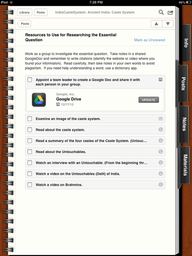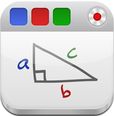Excitement. Enthusiastic anticipation of a good thing. An excellent experience in the making.
The act of teaching is the art of bringing many components together and orchestrating them into a meaningful whole: the student, engagement strategies, pedagogy, relevance, and authentic experiences. Teaching is like conducting; it's knowing when to let a single instrument play and when to let the whole symphony soar. Maybe that's how some teachers know when it's time to make a change - when the song becomes just another song and the notes are no longer special.
There are so many moving parts to a good lesson, it can be difficult to harmonize them all. As teachers, we have to foster in ourselves a keen sense of timing and what it means to facilitate, as opposed to direct. While effective direct instruction is not a bad thing, the lessons that I (and my students) enjoy the most are those which allow autonomy and encourage investigation. No matter what we do, technology is almost always a main component.
At my school site, I am responsible for training others about Common Core State Standards as California transitions to the CCSS over the next several years. I've begun piloting Common Core ELA lessons in my classroom and last week I decided to test drive a Common Core lesson plan that I wrote for Social Studies. In the end, the week long lesson proved to be a veritable symphony of project-based learning, iTunes U, and collaboration.
The standards I decided to address were a blend of my content area standards and the CCSS Literacy Standards for Social Studies, History, Science, and Technical Subjects. Here's a breakdown:
Social Studies Standard 6.5.4: Outline the social structure of the caste system.
CCSS Literacy Standards for Social Studies, Reading:
2. Determine the central ideas or information of a primary or secondary sources; provide an accurate summary of the source distinct from prior knowledge or opinions.
7. Integrate visual information (e.g., in charts, graphs, photographs, videos, or maps) with other information in print and digital texts.
CCSS Literacy Standards for Social Studies, Writing:
6. Use technology, including the Internet, to produce and publish writing and present the relationships between information and ideas clearly and efficiently.
7. Conduct short research projects to answer a question, drawing on several sources and generating additional related, focused questions that allow for multiple avenues of exploration.
8. Gather relevant information from multiple print and digital sources (primary and secondary) using search terms effectively...quote or paraphrase the data and conclusions of others while avoiding plagiarism...
Students did an incredible job utilizing the course to help walk them through the PBL process: developing an inquiry plan, creating a reasonable schedule, conducting research, compiling notes, and creating a product to demonstrate their learning. The duration of the project was an hour per day for five consecutive days, and the essential question under investigation was, "How was ancient Indian society organized and how does it compare to our society here in the United States?"
Check out this video clip of my students. This is around the time that I started getting that insanely wonderful feeling of a successful lesson in progress:
App: iMovie |
App: Educreations | |
App: Phoster |
There's a feeling I get, when a lesson went well - you know the one, because you've felt it, too.
Success.
If you have questions about the process I used or any aspect of this post, please feel free to leave a comment.








 RSS Feed
RSS Feed
